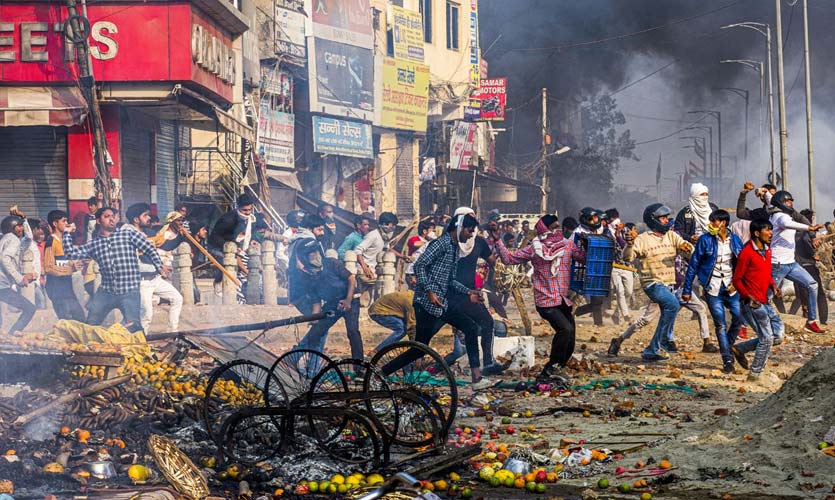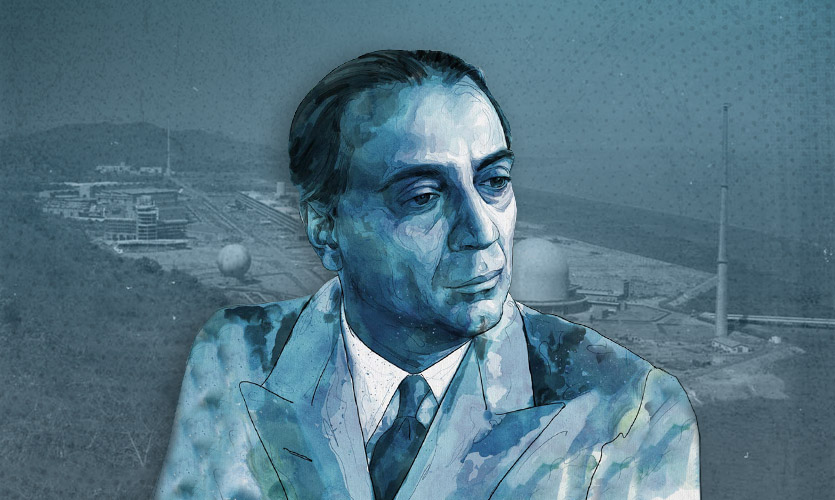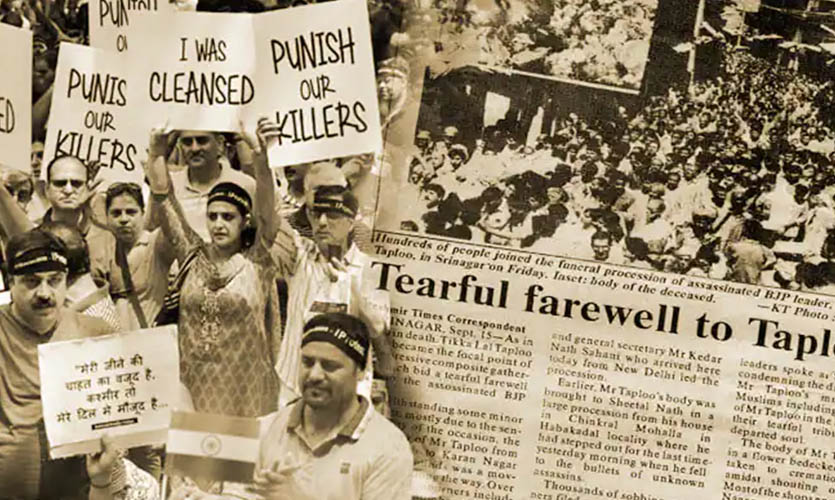While religious conflict is fathomable in regions comprising multiple communities, Hindu-Muslim communal riots have been a staple in India ever since the British introduced the “clash of civilisations”.
However, only four months in, India has already seen an unprecedented rise in communal violence this year. How did we get here?
The Timeline
The beginning of communal clashes this year can be traced back to the hijab controversy in Karnataka that garnered national attention in January, and continues to remain a topic of debate. After six girls studying at the Udupi Women’s Pre-University College were denied entry into the premises for wearing hijab since it goes against the institution’s dress code, serious confrontations commenced between groups of students. As the girls remained adamant and continued to reach the college wearing their hijab, on January 3, 2022, some Hindu students of the First Grade College in Chikmagalur responded by coming to the institution wearing saffron scarves. On January 6, similar scenes were witnessed at the Pompei College in Mangalore. As protests and clashes between student groups continued, Karnataka Primary and Secondary Education Minister BC Nagesh asserted that the state was considering the implementation of a uniform dress code. On January 31, a Muslim girl filed a writ petition in the Karnataka High Court, stating that wearing the hijab is her fundamental right under Articles 14 and 25 of the constitution, and an essential part of Islam. In the following days, several institutions such as the Kundapur Government PU College, the Sir M Vishweshwaraiah Government Arts and Commerce College in Shivamogga, and the Bhandarkar’s Arts & Science College, shut their gates on all students when some of them turned up wearing hijabs, and some in saffron scarves.
The matter was first heard on February 8, by Justice Krishna Dixit, who referred it to a larger bench of the Karnataka High Court, the next day. In the interim order passed on February 10, the court said that hijab will not be allowed inside classrooms that have a predefined dress code. “Pending consideration of all these petitions, we restrain all the students regardless of their religion or faith from wearing saffron shawls (bhagwa) scarfs, hijab, religious flags or the like, within the classroom, until further orders,” read the order. On February 17, the Karnataka HC dismissed one of the petitions saying, “We will dismiss this petition. It is not maintainable. We will dismiss your petition with costs. You are testing our nerves.” About a month later, on March 15, the court upheld the hijab ban in classrooms saying that it was a “reasonable restriction” and “constitutionally permissible”. The court also ordered a police probe to investigate the “unseen hand at work to engineer social unrest and disharmony” in Karnataka while the hearings progressed. On March 24, the Supreme Court rejected the pleas challengng the HC verdict in the apex court, saying that wearing the hijab is not an essential part of Islam. One of the petitioners, Aishat Shifa’s counsel, requested an early hearing since her exams were starting from March 28. “Examinations have nothing to do with hijab… do not sensationalise the things,” said Chief Justice of India, NV Ramana.
While the matter was still being heard by the Karnataka HC, there were constant protests, with the state always on the brink of mob and political violence. Meanwhile, calls for banning loudspeakers in mosques and halal meat also emerged. On February 20, Bajrang Dal activist Harsha Nagaraj was hacked to death by ‘local Muslim gang’ members with whom he had a long-standing feud over local and religious issues since 2016. On March 1, tension erupted in Kalaburagi district’s Aland town, with 167 people booked in connection with stone pelting and other violent incidents over access to the Ladle Mashak Dargah. While Hindu activists wanted to perform a purification pooja of the Raghavachaitanya’s Shivalinga at the dargah, Muslim community members wanted to pay their respects as well. Interestingly, both groups were in violation of the prohibitory orders imposed by the police from February 27 to March 3, and only 10 members from the Hindu community were to be allowed entry for performing the pooja on March 1.
Although there were multiple ongoing protests across India in relation to the hijab row verdict, the Karauli violence was unexpected. On April 2, a shobhayatra to mark the Hindu New Year was attacked by stone-pelters on roofs, as soon as it reached a Muslim locality near Masjid Maniharan. While the FIR mentions that the stone-pelting may have been pre-planned, shop owners have pointed out that if that were the case they would have closed their shops to avoid arson. According to reports, some residents have alleged that the right-wing group members leading the rally were using incendiary slogans such as, “Topi wala bhi Jai Shri Ram bolega (one wearing the skull cap will also chant Jai Shri Ram).” Matters escalated on the occasion of Ram Navami, on April 10, when several processions encountered stone pelting while passing through Muslim inhabited areas. 84 people were arrested and Section 144 was imposed in Khargone, Madhya Pradesh, after clashes in the area left several houses and shops damaged, and vehicles torched. Similar violent incident reports during Ram Navami also surfaced in Gujarat, Jharkhand, Maharashtra, and Odisha, and at least 130 people were arrested across the states. Violent clashes broke out in Himmatnagar and Khambat towns of Gujarat during processions, in which at least one person was killed and 39 people were arrested. Jharkand’s Lohardaga district saw instances of stone-pelting and arson, following which prohibitory orders were issued by the district administration. Reportedly, 25-30 vehicles were vandalised near the Mhada colony of eastern Mumbai’s Mankhurd suburb as a result of a minor clash, leading to the arrest of at least seven people. Section 144 was imposed in Odisha’s Joda town after a procession carrying a ‘Ram Jhanda’ was not allowed to pass through Azad Basti on its way to Kailash Nagar, on the day after Ram Navami. The Jawaharlal Nehru University also reported violence after the left wing students and Akhil Bharatiya Vidyarthi Parishad activists clashed over the cooking of non-veg food in the canteen, on April 10.
The debate on communal clashes was further fuelled after the MP state administration sent bulldozers and JCB machines to Khargone and Sendhwa on April 11, to raze to the ground more than 50 properties belonging to those involved in rioting. “These rioters have been identified. They will not be released. Strictest action will be taken against them,” MP CM Shivraj Singh Chauhan had tweeted. He also assured that the cost of any damage to public property during the riots on Ram Navami will be duly recovered from the convicted. Clashes similar to those on Ram Navami were reported on the occasion of Hanuman Jayanti, on April 16. Hindu and Muslim groups clashed and attacked each other with bricks, in Delhi’s Jahangirpuri. As per police reports, the incident occured when the shobhayatra blaring religious music passed alongside the mosque around the time of azan, following which at least 14 people were arrested. Reportedly, the procession did not have prior permission to pass through the route. The same day, a mob in Hubbali turned violent, triggered by a “blasphemous” social media post by Abhishek Hiremath, who was reportedly arrested. “There are many unseen hands. Innocent people were made to hit the streets and become violent,” said Karnataka Home Minister Araga Jnanendra. 134 people were arrested, including cleric Wasim Pathan, who was accused of instigating the people. On April 19, an anti-encroachment and demolition drive, similar to that in MP and reportedly, in Uttar Pradesh, was carried out in Jahangirpuri. However, the Supreme Court intervened hours later, ordering status quo. Following this, a video of an April 17 anti-encroachment drive in Alwar, Rajasthan went viral, in which a 300-year-old temple was demolished, without relocating the idols first. This led to condemnation across the country, protests across the state, and riots in Karauli and Jodhpur, which were also induced by . On May 5, a video surfaced on Twitter, in which, some members of the Muslim community in Kavalande in Mysuru, Karnataka, could be seen chanting, “Kavalande bole toh Chota Pakistan (Kavalande is mini Pakistan).”
Additionally, there has also been a rise in political killings in India, be it the Birbhum violence in West Bengal, or the political violence involving Rashtriya Swayamsevak Sangh and Popular Front of India members in Palakkad, Kerala. There were reports of violence in Patiala, Punjab as well, on April 29, when the Shiv Sena sparred with a group of Sikh separtist activists, on the ‘foundation day of Khalistan’.
Rioting Without A Cause
The popular left wing narrative largely comprises blaming the Narendra Modi-led BJP government, even in Congress administered states like Rajasthan, or the Maha Vikas Aghadi-led Maharashtra. However, a pattern of fear and minority appeasement seems to shine through the communal prism. Ever since the Citizenship Amendment Act, 2019, has been passed, and Article 370 according Jammu and Kashmir its special status has been removed, opposition parties have taken it upon themselves to overturn these rulings, supposedly on the behalf of the Muslim community. But does it really benefit the community? During the hijab row, several Islamic scholars pointed out that the religion does not mandate the practice. The Indian Muslims for Secular Democracy (IMSD), an organisation comprising more than 150 human rights activists, has stated, “While this may be the belief of the orthodox and patriarchal clerics, any number of modern-day Islamic scholars, men and women, rightly maintain that hijab has nothing to do with the teachings of the Quran and the Prophet. The veil, in other words, is not mandatory in Islam.” Exiled Bangladesh-origin author Taslima Nasreen says, “Hijabs, niqabs and burqas have a singular aim of commodifying women as sex objects.”
The ensuing panic also seems to be a direct effect of the recent judicial rulings on the use of loudspeakers in mosques and the implementation of a uniform civil code (UCC). Dismissing a petition on May 6, the Allahabad High Court observed that although saying the azan is an integral part of Islam and hence, a protected fundamental right, using loudspeakers to deliver it is not. “The law has now been settled that use of loudspeaker from mosque is not a fundamental right. Ever otherwise a cogent reason has been assigned in the impugned order,” noted the court. Playing the azan on loudspeakers has especially been objected upon by some scholars and Hindu groups due to its contents. Last year, the Allahabad HC also put the onus of implementing the UCC on the Centre saying, “It is the State which is charged with the duty of securing a uniform civil code for the citizens of the country and, unquestionably, it has the legislative competence to do so.” Moreover, contrary to the narrative peddled against the anti-conversion laws in place in most BJP-served states to prevent forced conversions, the court noted that UCC “is a necessity and mandatorily required today” to grant relief to interfaith couples.
The demolition and anti-encroachment drives on shops, homes and temples has also raised questions on the central and state governments’ abilities to follow procedure. Among all anti-encroachment drives carried out recently, proof of the mandatory 15 days’ notice was only furnished by the municipal authorities in Gujarat. Additionally, the illegal properties razed in Gujarat were not owned by anyone involved in the Ram Navami violence. However, in MP, the state administration and municipal authorities acted with vindication, without regard for legal procedure, or facing any action subsequently. In the capital city, the North Delhi Municipal Corporation responsible for the demolition in Jahangirpuri, is headed by the BJP. Additionally, as per reports, NDMC officers continued with the demolition (without 15 days’ notice) despite the apex court’s stay order. Is it possible that the party prefers citing judicial rulings only when convenient? Similar allegations can be made in Rajasthan as well, where the state government has suspended three municipality officers for carrying out the demolition of two temples in Alwar, in Rajgarh municipal town, without giving notice. The suspended officials are Rajgarh SDM Keshav Kumar Meena, Rajgarh Nagar Parishad chairman and BJP leader Satish Duharia, and Nagar Parishad executive officer Banwari Lal Meena. One of the temples demolished was 300-years-old, which begs to ask questions of the Archaeological Survey of India and the Department of Archaeology, Museums and Heritage, according to whom, any structure that has been in existence for 100 years or more is protected heritage.
The Places of Worship (Special Provisions) Act, 1991, has also been brought in as a point of contention, said to have been passed “deceitfully” to appease a minority, and shirk the state’s responsibility of righting historical wrongs. The act disallows the conversion of any place of worship and guarantees the maintenance of its “religious character” as it existed on August 15, 1947. Last month, a Hindu temple-like structure was found beneath the facade of the Juma Masjid in Mangalore, during its renovation.
Uninformed Interference
Pakistani activist Malala Yousafzai, while commenting on the hijab row in India, had tweeted, “Objectification of women persists — for wearing less or more. Indian leaders must stop the marginalisation of Muslim women.” Indian-American model and author Padma Lakshmi tweeted, “Sickening to see violence against Muslims celebrated in India. The widespread anti-Muslim rhetoric… poisons people.” She continued, “There is no threat to Hinduism in India or anywhere else.”
Explaining the hijab row in Karnataka, a CNN report says, “It (Karnataka) has also introduced a controversial anti-conversion bill, which makes it more difficult for interfaith couples to marry or for people to convert to Islam or Christianity.” The report makes this inference while failing to touch upon the concept of personal laws, forced conversions, conditioning of women, and the idea of uniform civil code that would truly make every Indian citizen equal before the law without space for religious or communal interference.
International interference in India has been a norm for the Western community and the uniformed Indian diaspora elsewhere, be it regarding its stand on the Russia-Ukraine conflict, or Kashmir. India was also ranked 150 on the World Press Freedom Index for 2022, falling from 142 in 2021. However, the report by Reporters Sans Frontieres’ makes most inferences based on blackouts in Kashmir, without assessing the ground reality and dangers in the region.
It is time to let this wave of communal violence crash before a dangerous and uniformed international interference becomes inevitable. But do we have leaders skilled enough to manage the ride through?
The Horus Eye is a weekly column written by Divya Bhan analysing current affairs and policies. This column does not intend or aim to promote any ideology and does not reflect the official position of The Sparrow.
Also read: Can The AAP Successfully Present An Alternative To India’s Aam Aadmi?
Also read: Why Does The Ethnic Cleansing Of Kashmiri Pandits Need To Be Recognised As A Genocide?










